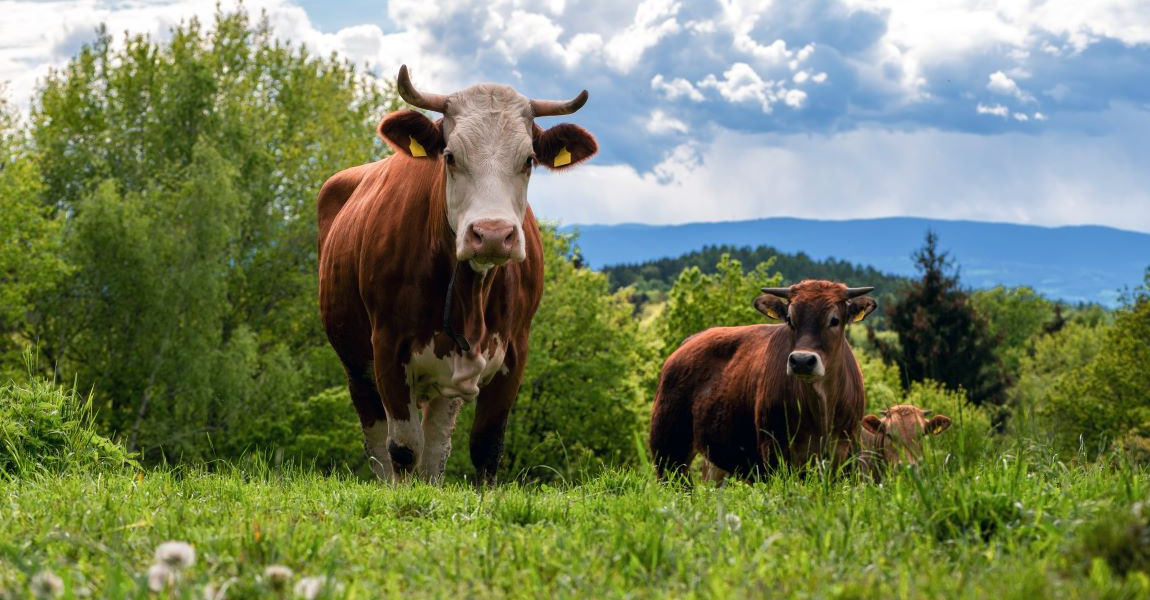A powerful greenhouse gas, whose emissions continue to rise
Methane emissions have risen 2.6-fold since the preindustrial era and are now the second most-emitted anthropogenic greenhouse gas (i.e., emitted by human activities), after carbon dioxide (CO2), and now account for 0.5°C of global warming. Chemically speaking, methane (CH4) is a hydrocarbon composed of one carbon atom and four hydrogen atoms. Methane is emitted from both natural and anthropogenic sources. It has a high global warming potential (GWP). According to the latest Intergovernmental Panel on Climate Change (IPCC) report, its 100-year GWP is about 30 times that of CO2. Its lifespan, however, is about 10 years, much shorter than that of CO2, which can remain in the atmosphere for hundreds of years. Reducing methane emissions therefore remains an effective lever for slowing climate change.
Methane comes from several sources:
- Thermogenic methane is produced over long period of times by organic matter preserved from bacterial decomposition by a combination of pressure and temperature in landfills. Methane pockets are found in coal mines and oil spills. The energy sector thus makes a significant contribution to methane leakage, which also occurs during the extraction, production and transportation of oil and natural gas.
- Microbial methane is produced from the decomposition of organic matter under oxygen-free conditions. This occurs in certain natural environments, such as wetlands, in agriculture such as rice farming and ruminant farming, or from the decomposition of organic waste in open-air landfills.
- Pyrogenic methane is produced by the incomplete combustion of biomass (farm stubble, forest fires, etc).
Supporting research on methane
The BNP Paribas Foundation supports scientific research through its Climate & Biodiversity Initiative, a programme dedicated to environmental research on the climate and biodiversity. It also plays a role in raising awareness of environmental challenges with its stakeholders through the dissemination and popularisation of scientific knowledge by holding conferences, exhibitions and other public events.
Among others, the BNP Paribas Foundation has supported the Global Carbon Project (GCP) in creating the Global Carbon Atlas, an online platform that can be used to obtain, visualise and interpret the most recent data on the global carbon cycle, country-by-country. The GCP was established in 2001 as a global research project to mobilise the scientific community, with the goal of establishing a common base of knowledge on the climate and greenhouse gas emissions. Each year since 2006, the GCP has published the Global Carbon Budget, whose goal is to track emissions and carbon sink trends worldwide; it is a key measure of progress accomplished in meeting the objectives of the Paris Agreement. The GCP also publishes the Global Methane Budget, a report on global methane emissions. The latest report, in June 2024, was alarming. It suggested that human activities are responsible for two thirds of global methane emissions and that such emissions are increasing.
"Methane concentrations in the atmosphere have risen 2.6-fold since the preindustrial era. Emissions have risen by 20% in 20 years. Human activities are responsible for two thirds of the emissions. The largest of these is agriculture (livestock breeding and rice farming), followed closely by the fossil fuels sector. But in recent years, emissions from the waste sector have risen drastically."
This is a valuable partnership for BNP Paribas in better understanding the methane footprint, thanks to cutting-edge technologies, in developing precise measures to support its corporate clients in their emissions-reduction strategies, and in contributing to the body of knowledge and research on quantifying methane emissions. A methane feasibility study is being conducted within the Group’s Company Engagement department. To this end, the data scientists in the Climate Analytics & Alignment team, supported by data from Kayrros, use modelling techniques, including geospatial analysis, to test the most accurate climate performance metrics at the portfolio level. These efforts are part of BNP Paribas' commitment to contribute to the development of open source tools and methodologies for measuring the climate impact of financial portfolios.




